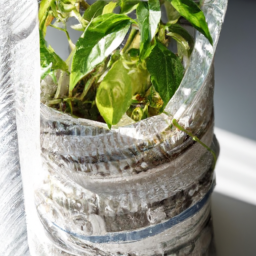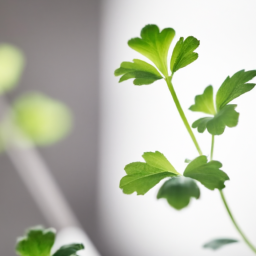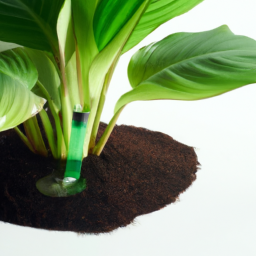
Are you an indoor plant enthusiast looking for the best grow light to keep your plants thriving? Look no further! In this blog post, we will explore the top options available on the market and help you find the best grow light for indoor plants. Whether you’re a seasoned gardener or just starting your green thumb journey, having the right grow light is essential for providing your plants with the necessary light spectrum for optimal growth. Let’s dive in and discover the perfect grow light to create a vibrant and healthy indoor garden.
Top 5 Factors to Consider When Choosing the Best Grow Light for Indoor Plants
Introduction
Indoor plants require adequate lighting to thrive and grow. However, natural sunlight may not always be sufficient, especially in areas with limited access to sunlight or during certain seasons. This is where grow lights come in handy. Grow lights are artificial light sources designed to provide the necessary light spectrum for plants to carry out photosynthesis effectively. With a wide range of options available, it can be overwhelming to choose the best grow light for your indoor plants. In this guide, we will discuss the top five factors to consider when selecting the best grow light for indoor plants.
Light Spectrum
The light spectrum is one of the most crucial factors to consider when choosing a grow light for indoor plants. Different stages of plant growth require different light wavelengths. The two main types of light spectrum are full spectrum and targeted spectrum.
Full spectrum grow lights mimic natural sunlight, providing a broad range of light wavelengths. They are suitable for all stages of plant growth, from seedling to flowering. On the other hand, targeted spectrum grow lights focus on specific wavelengths that are most beneficial for plant growth during particular stages. These lights can be customized to meet the specific needs of your plants.
Consider the type of plants you are growing and their specific light requirements when selecting the light spectrum for your grow light. A good rule of thumb is to choose a grow light that offers a balanced spectrum to support overall plant health and growth.
Light Intensity
The light intensity or brightness of a grow light is another crucial factor to consider. Different plants have varying light intensity requirements. Some plants, such as succulents, thrive in high light intensity, while others, like ferns, prefer lower light intensity.
When choosing a grow light, check the light intensity measurement provided by the manufacturer. This measurement is usually given in terms of PAR (Photosynthetically Active Radiation) or PPFD (Photosynthetic Photon Flux Density). Higher PAR or PPFD values indicate higher light intensity. Ensure that the grow light you choose can provide the required light intensity for your specific plants.
Additionally, consider the size of your indoor space and the distance between the grow light and your plants. Larger spaces or plants placed farther away may require grow lights with higher light intensity to ensure adequate coverage.
Energy Efficiency
Energy efficiency is an important factor to consider when choosing a grow light for indoor plants. Grow lights can consume a significant amount of electricity, especially if used for long periods. Opting for energy-efficient grow lights not only helps reduce your energy bills but also minimizes your environmental impact.
Look for grow lights that are labeled as energy-efficient or have a high efficacy rating. LED grow lights are known for their energy efficiency as they convert a higher percentage of electricity into usable light compared to traditional fluorescent or HID lights. LED grow lights also produce less heat, reducing the need for additional cooling systems.
Consider the wattage of the grow light and compare it with the light output it provides. A higher wattage does not always mean better light output. Look for grow lights that offer a good balance between wattage and light output to ensure energy efficiency.
Durability and Lifespan
Investing in a durable and long-lasting grow light is essential to avoid frequent replacements and additional costs. Look for grow lights made with high-quality materials that can withstand the rigors of indoor gardening.
LED grow lights are known for their durability and long lifespan. They have no fragile components, such as filaments or glass tubes, which can easily break. LED grow lights can last for tens of thousands of hours, providing consistent and reliable light for your indoor plants.
Consider the warranty offered by the manufacturer as it can be an indicator of the grow light’s durability. A longer warranty period suggests that the manufacturer has confidence in the product’s quality and lifespan.
Price and Budget
Price is an important factor to consider when choosing a grow light for indoor plants. The cost of grow lights can vary significantly depending on their features, brand, and quality.
Set a budget for your grow light purchase and consider the value it provides. Cheaper grow lights may save you money upfront but may lack essential features or have a shorter lifespan. On the other hand, more expensive grow lights may offer advanced features and higher quality construction.
Consider the long-term benefits and potential savings when evaluating the price of a grow light. A higher-priced grow light with energy-efficient features and a longer lifespan may save you money in the long run through reduced energy consumption and replacement costs.
Conclusion
Choosing the best grow light for your indoor plants requires careful consideration of various factors. The light spectrum, light intensity, energy efficiency, durability, and price are all important aspects to evaluate when making your decision.
Remember to consider the specific needs of your plants and the conditions of your indoor space. By selecting the right grow light, you can provide your indoor plants with the optimal lighting conditions they need for healthy growth and development.
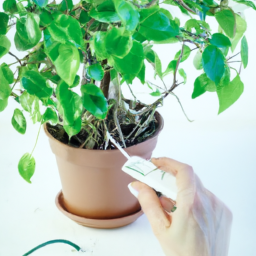
Comparing Different Types of Grow Lights: Which is the Best for Indoor Plant Growth?
Indoor gardening has become increasingly popular, and one of the key factors for successful plant growth is providing adequate lighting. When natural sunlight is limited, grow lights are essential to ensure that your indoor plants receive the necessary light spectrum for photosynthesis. However, with the wide variety of grow lights available in the market, it can be overwhelming to choose the best one for your indoor plants. In this article, we will compare different types of grow lights to help you make an informed decision.
1. Fluorescent Grow Lights
Fluorescent grow lights are a popular choice among indoor gardeners due to their affordability and efficiency. There are two main types of fluorescent lights: T5 and compact fluorescent lights (CFLs).
T5 fluorescent lights are long and narrow tubes that provide a high-intensity light output. They are energy-efficient, produce low heat, and are suitable for all growth stages of indoor plants. T5 lights are ideal for seedlings and young plants that require lower light intensity.
CFLs are compact and versatile grow lights that can be easily screwed into standard light sockets. They are available in various wattages and color temperatures, making them suitable for different plant growth stages. CFLs are cost-effective and emit less heat compared to other grow lights, making them ideal for small indoor gardens.
Overall, fluorescent grow lights are an excellent choice for beginners or those on a budget. They provide sufficient light for most indoor plants and are energy-efficient.
2. High-Intensity Discharge (HID) Grow Lights
HID grow lights are known for their high light output and are commonly used in commercial indoor farming. There are two types of HID lights: metal halide (MH) and high-pressure sodium (HPS) lights.
MH lights emit a bluish-white light spectrum, which is ideal for promoting vegetative growth. They are suitable for plants in the early stages of growth and produce a significant amount of heat. MH lights require a ballast to regulate the electrical current.
HPS lights emit a reddish-orange light spectrum, which is ideal for promoting flowering and fruiting. They are more efficient than MH lights and produce less heat. HPS lights also require a ballast for operation.
HID grow lights are powerful and provide intense light, making them suitable for larger indoor gardens or commercial setups. However, they can be expensive to purchase and operate, and the heat they produce needs to be properly managed.
3. Light-Emitting Diodes (LED) Grow Lights
LED grow lights have gained popularity in recent years due to their energy efficiency and versatility. They are available in various colors and spectrums, allowing growers to customize the light output for specific plant requirements.
LED lights are long-lasting and do not require frequent bulb replacements. They produce less heat compared to other grow lights, reducing the risk of heat damage to plants. LED grow lights are also adjustable in terms of intensity and can be dimmed or brightened as needed.
Although LED grow lights can be more expensive upfront, they are cost-effective in the long run due to their energy efficiency and durability. They are suitable for all growth stages of indoor plants and provide a balanced light spectrum for optimal photosynthesis.
In conclusion, choosing the best grow light for indoor plants depends on various factors such as budget, garden size, and plant requirements. Fluorescent grow lights are a budget-friendly option, HID lights are powerful but expensive, and LED lights offer energy efficiency and versatility. Consider your specific needs and preferences to select the most suitable grow light for your indoor garden. Happy gardening!
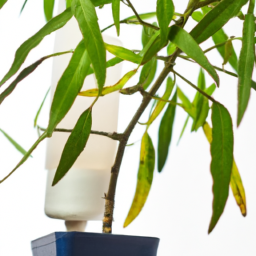
The Benefits of Using LED Grow Lights for Indoor Plant Cultivation
Introduction
Indoor gardening has become increasingly popular in recent years, allowing plant enthusiasts to cultivate a wide variety of plants in the comfort of their own homes. One essential component for successful indoor plant cultivation is the use of grow lights. Among the various options available, LED grow lights have gained significant popularity due to their numerous benefits. In this article, we will explore the advantages of using LED grow lights and why they are considered the best choice for indoor plant cultivation.
1. Energy Efficiency
LED grow lights are highly energy efficient compared to traditional lighting options such as fluorescent or incandescent bulbs. LEDs convert a higher percentage of energy into light, resulting in less energy wasted as heat. This not only reduces electricity costs but also minimizes the risk of overheating plants. With LED grow lights, you can provide your indoor plants with the necessary light without worrying about excessive energy consumption.
Furthermore, LED grow lights have a longer lifespan compared to other types of lighting. While traditional bulbs may need frequent replacements, LED bulbs can last up to 50,000 hours, significantly reducing maintenance and replacement costs.
Overall, the energy efficiency of LED grow lights makes them a cost-effective and sustainable choice for indoor plant cultivation.
2. Spectrum Control
One of the key advantages of LED grow lights is their ability to provide a customized light spectrum for different plant growth stages. Plants require specific wavelengths of light for photosynthesis and different stages of growth. LED grow lights can be tailored to emit the exact wavelengths needed by plants, allowing for optimal growth and development.
For example, during the vegetative stage, plants require more blue light to promote leafy growth. LED grow lights can be adjusted to emit a higher proportion of blue light during this stage. Similarly, during the flowering stage, plants benefit from increased red light. LED grow lights can be easily adjusted to provide the necessary red light spectrum, ensuring healthy and abundant blooms.
The ability to control the light spectrum with LED grow lights allows indoor gardeners to mimic natural sunlight and provide the ideal conditions for their plants throughout their growth cycle.
3. Heat Management
Heat management is crucial when it comes to indoor plant cultivation. Excessive heat can damage plants and hinder their growth. LED grow lights produce significantly less heat compared to traditional lighting options, making them ideal for indoor gardening.
LED grow lights are designed with heat sinks and fans to dissipate any heat generated, preventing it from accumulating and harming the plants. This efficient heat management not only protects the plants but also reduces the need for additional cooling systems, saving both energy and costs.
With LED grow lights, you can maintain an optimal temperature for your indoor plants, ensuring their health and vitality.
Conclusion
LED grow lights offer numerous benefits for indoor plant cultivation. Their energy efficiency, spectrum control, and heat management capabilities make them the best choice for indoor gardening. By using LED grow lights, you can provide your plants with the ideal light conditions throughout their growth cycle, resulting in healthy and thriving indoor gardens.
Investing in quality LED grow lights is a wise decision for any indoor gardener, as it not only enhances plant growth but also saves energy and reduces maintenance costs. So, why wait? Upgrade your indoor gardening setup with LED grow lights and enjoy the rewards of vibrant and flourishing plants.

Expert Tips for Maximizing Indoor Plant Growth with the Best Grow Lights
Introduction
Growing plants indoors can be a rewarding experience, especially when you have the right tools at your disposal. One such tool that can greatly enhance your indoor gardening efforts is a grow light. With the right grow light, you can provide your plants with the necessary light spectrum and intensity to promote healthy growth throughout all stages of their life cycle.
Understanding the Basics of Grow Lights
Before delving into the tips for maximizing indoor plant growth with grow lights, it’s important to understand the basics of these lighting systems. Grow lights are artificial light sources designed to mimic the natural sunlight that plants require for photosynthesis. They come in various types, including fluorescent, LED, and high-intensity discharge (HID) lights.
Each type of grow light has its own advantages and disadvantages, so it’s crucial to choose the right one based on the specific needs of your plants. Factors to consider include the type of plants you’re growing, the size of your indoor garden, and your budget.
Now, let’s dive into some expert tips for maximizing indoor plant growth with the best grow lights.
Tip 1: Determine the Right Light Spectrum
The light spectrum emitted by grow lights plays a vital role in plant growth and development. Different light wavelengths have varying effects on plants, so it’s important to choose a grow light that provides the right spectrum for your specific plants.
For most plants, a full spectrum grow light that includes both blue and red light is ideal. Blue light promotes vegetative growth, while red light stimulates flowering and fruiting. Some advanced grow lights even allow you to adjust the light spectrum according to the specific growth stage of your plants.
It’s worth noting that some plants, such as succulents and cacti, thrive under specific light spectrums. Research the light requirements of your plants to ensure you’re providing them with the optimal spectrum for maximum growth.
Tip 2: Consider Light Intensity and Coverage
The intensity of light and its coverage area are crucial factors to consider when choosing a grow light. Each plant has different light intensity requirements, so it’s important to match the intensity of your grow light with the needs of your plants.
Generally, leafy greens and herbs require lower light intensity, while flowering plants and fruiting vegetables need higher levels of light. Be sure to check the recommended light intensity for your specific plants and adjust your grow light accordingly.
In terms of coverage, the size of your indoor garden will determine the number of grow lights you need. Ensure that the grow light covers the entire area where your plants are located to ensure uniform growth and prevent any plants from being shaded by others.
Tip 3: Understand Light Duration and Photoperiod
Plants require a certain amount of light each day to carry out photosynthesis and maintain healthy growth. This duration of light exposure is known as the photoperiod. Understanding the photoperiod requirements of your plants is crucial for their overall growth and development.
Most plants require around 12-16 hours of light per day during their vegetative stage, while flowering plants may need shorter photoperiods of around 10-12 hours. It’s important to provide your plants with consistent and uninterrupted light during their required photoperiod to avoid any disruptions in their growth cycle.
Some advanced grow lights come with built-in timers that allow you to easily control the duration of light exposure. If your grow light doesn’t have this feature, you can use a separate timer to ensure your plants receive the right amount of light each day.
Conclusion
Growing indoor plants can be a delightful and rewarding experience, especially when you have the best grow lights to support their growth. By considering the light spectrum, intensity, coverage, and photoperiod requirements of your plants, you can maximize their growth potential and achieve healthy and thriving indoor gardens. Remember to choose the right grow light based on your specific plant needs and provide them with the optimal lighting conditions for success.
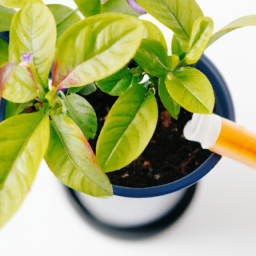
Top 5 Best Grow Lights for Indoor Plants: A Comprehensive Review and Comparison
Indoor gardening has become increasingly popular, allowing plant enthusiasts to grow a wide variety of plants in the comfort of their own homes. However, without access to natural sunlight, indoor plants often struggle to receive the necessary amount of light for optimal growth. This is where grow lights come in. In this comprehensive review and comparison, we will explore the top 5 best grow lights for indoor plants, helping you make an informed decision for your indoor gardening needs.
1. LED Grow Light
LED grow lights have gained immense popularity among indoor gardeners due to their energy efficiency and versatility. These lights produce a specific spectrum of light that is ideal for plant growth, ensuring that your indoor plants receive the right amount of light at each stage of their growth cycle.
LED grow lights are available in various wattages and sizes, allowing you to choose the perfect light for your indoor garden. They also have a long lifespan, reducing the need for frequent replacements. Additionally, LED grow lights emit less heat compared to other types of grow lights, minimizing the risk of heat damage to your plants.
When selecting an LED grow light, consider the specific light spectrum it offers, as different plants have varying light requirements. Look for a grow light that provides a full spectrum, including both blue and red light, as these are crucial for photosynthesis and overall plant health.
2. Fluorescent Grow Light
Fluorescent grow lights have been a popular choice for indoor gardeners for many years. These lights are affordable, easy to install, and emit a balanced spectrum of light that promotes healthy plant growth. They are available in two main types: compact fluorescent lights (CFL) and high-output fluorescent lights (HO).
CFL grow lights are ideal for small indoor gardens or individual plants. They are energy-efficient and emit low levels of heat, making them suitable for plants that require lower light intensity. On the other hand, HO fluorescent lights are more powerful and are suitable for larger indoor gardens or plants that require higher light intensity.
When using fluorescent grow lights, it is important to position them close to your plants, as their intensity decreases with distance. Additionally, fluorescent lights should be replaced every 6-12 months to ensure optimal light output.
3. HID Grow Light
HID (High-Intensity Discharge) grow lights are known for their incredible light output, making them ideal for larger indoor gardens or plants that require high light intensity. There are two main types of HID grow lights: Metal Halide (MH) and High-Pressure Sodium (HPS).
MH grow lights emit a bluish-white light that is suitable for the vegetative stage of plant growth, promoting leafy growth and overall plant development. HPS grow lights, on the other hand, emit a reddish-orange light that is ideal for the flowering stage, encouraging the production of fruits and flowers.
While HID grow lights are powerful, they do generate a significant amount of heat and require proper ventilation and cooling systems to prevent heat damage to your plants. They also consume more energy compared to LED or fluorescent lights.
4. Plasma Grow Light
Plasma grow lights are relatively new to the market but have gained attention for their unique features. These lights produce a full spectrum of light that closely mimics natural sunlight, providing optimal conditions for plant growth. They are also energy-efficient and have a long lifespan.
Plasma grow lights emit very little heat, reducing the risk of heat damage to your plants. They are also compact and lightweight, making them easy to install and move around your indoor garden. However, plasma grow lights tend to be more expensive compared to other types of grow lights.
5. Induction Grow Light
Induction grow lights are another option to consider for your indoor garden. These lights use electromagnetic fields to excite gases inside the bulb, producing light. They are known for their energy efficiency, long lifespan, and low heat output.
Induction grow lights provide a broad spectrum of light that is suitable for all stages of plant growth. They are also compact and lightweight, making them easy to install and maintain. However, induction grow lights can be more expensive upfront compared to other options.
When selecting the best grow light for your indoor plants, consider factors such as the size of your indoor garden, the specific light requirements of your plants, and your budget. Each type of grow light has its own advantages and disadvantages, so choose the one that best suits your needs and preferences. With the right grow light, you can create an optimal environment for your indoor plants to thrive and flourish.
Here’s what we learned
Are you struggling to keep your indoor plants thriving? Perhaps it’s time to invest in a grow light. Indoor plants often lack the necessary sunlight to fully thrive, but with the right grow light, you can provide them with the artificial light they need to flourish. In this blog post, we will explore some of the best grow lights available on the market, making it easier for you to choose the perfect one for your indoor plants.
One of the top contenders for the best grow light is the LED grow light. LED lights are energy-efficient, emit less heat, and provide a full spectrum of light that closely mimics natural sunlight. They are also long-lasting, making them a cost-effective option in the long run. Another popular choice is the fluorescent grow light, which is more budget-friendly and suitable for small indoor gardens. Fluorescent lights are available in different spectrums, with cool white and warm white being the most common options.
If you’re looking for a more advanced option, the high-intensity discharge (HID) grow light might be the best choice for you. HID lights, including metal halide (MH) and high-pressure sodium (HPS) lights, are incredibly powerful and can cover a larger area. However, they do generate more heat and consume more energy than LED or fluorescent lights. Ultimately, the best grow light for your indoor plants will depend on your specific needs, budget, and the type of plants you are growing. By considering factors such as light spectrum, energy efficiency, and cost, you can find the perfect grow light to help your indoor plants thrive.
Frequently Asked Questions from our readers:
Q1: What is a grow light for indoor plants?
A1: A grow light is an artificial light source designed to provide the necessary light spectrum and intensity for indoor plants to grow and thrive. It is used to supplement or replace natural sunlight in environments where plants cannot receive adequate light.
Q2: Why do indoor plants need grow lights?
A2: Indoor plants require sufficient light for photosynthesis, the process by which they convert light energy into chemical energy to fuel growth. Grow lights ensure plants receive the right amount and quality of light, especially in spaces with limited natural light or during winter months.
Q3: What are the different types of grow lights available?
A3: The most common types of grow lights for indoor plants are LED (Light-Emitting Diode), fluorescent, and HID (High-Intensity Discharge) lights. Each type has its own advantages and considerations, such as energy efficiency, light spectrum, and initial cost.
Q4: What should I consider when choosing the best grow light for my indoor plants?
A4: Factors to consider include the type of plants you have, the size of your growing space, the light spectrum required for specific growth stages, energy efficiency, heat output, and your budget. It’s important to choose a grow light that suits your specific needs.
Q5: Are LED grow lights better than fluorescent lights?
A5: LED grow lights are generally considered more efficient and longer-lasting than fluorescent lights. They consume less energy, produce less heat, and can provide a wider spectrum of light. However, fluorescent lights are often more affordable upfront and can be suitable for certain plant species.
Q6: How far should grow lights be from plants?
A6: The distance between grow lights and plants depends on the light intensity and the specific needs of your plants. As a general guideline, LED lights can be placed 12-24 inches away, while fluorescent lights should be positioned 6-12 inches away. It’s crucial to refer to the manufacturer’s recommendations for optimal placement.
Q7: How long should I leave grow lights on?
A7: The duration of light exposure depends on the stage of plant growth. Most indoor plants require 12-16 hours of light per day during the vegetative stage and 8-12 hours during the flowering or fruiting stage. Using a timer can help automate the light schedule and ensure consistent lighting periods.
Q8: Can I use regular household bulbs as grow lights?
A8: While regular household bulbs can provide some light for plants, they are not specifically designed to meet the unique light spectrum and intensity requirements of indoor plants. Grow lights are engineered to optimize plant growth and are therefore a better choice for successful indoor gardening.
Q9: Are there any safety precautions to consider when using grow lights?
A9: Yes, safety precautions are important when using grow lights. Avoid overloading electrical circuits, ensure proper ventilation to prevent overheating, and follow the manufacturer’s instructions for installation and usage. It’s also crucial to keep grow lights out of reach of children and pets.
Q10: Where can I buy the best grow lights for indoor plants?
A10: You can find a wide range of grow lights for indoor plants at gardening stores, home improvement centers, and online retailers. Popular online platforms like Amazon, eBay, and specialized horticultural websites offer a variety of options to suit different budgets and requirements.
Dr. Olivia Green is a botanist with over two decades of experience in indoor plant cultivation. She holds a Ph.D. in Plant Biology and has dedicated her career to researching plant behavior in controlled environments. Dr. Green is passionate about helping plant enthusiasts master the art of indoor gardening through her extensive knowledge and practical insights.

